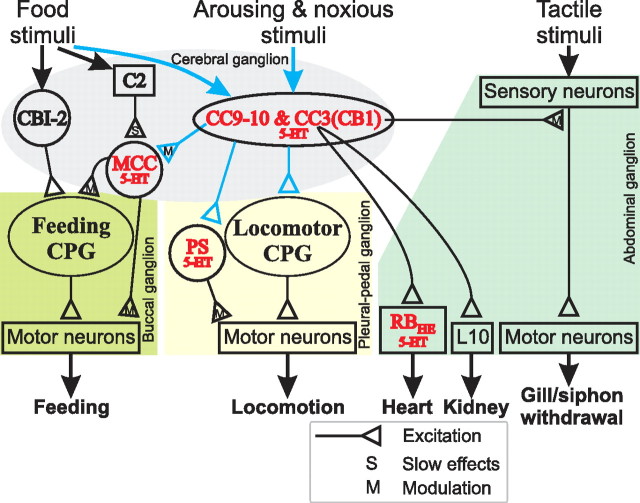Figure 11.
A schematic diagram illustrating a central role of serotonergic interneurons, CC9–10 and CC3(CB1) in a form of arousal elicited by noxious stimuli in Aplysia. CC3(CB1) data summarize previous work (Mackey et al., 1989; Xin et al., 2001; Marinesco et al., 2004). CC9–10 data are from this study, and are shown in blue. All serotonergic neurons (5-HT) are shown in red. The approximate ganglionic locations of the neural elements for different networks are also indicated. CC9–10 and CC3(CB1) constitute a group of heterogeneous serotonergic interneurons that are activated at different levels by a variety of stimuli. These neurons enhance the activity of various behavioral networks through fast excitatory and slow modulatory actions. CC9–10 and CC3(CB1) may preferentially act on the neurons in the pedal vs abdominal ganglia (e.g., the serotonergic PS vs RB neurons, respectively). CC9 and CC10 function to initiate locomotor activity. They enhance MCC excitability, thus promoting feeding in a manner that is conditional on the presence of food-related inputs (e.g., via food induced activation of C2). CC3(CB1) mediates presynaptic facilitation of sensory neurons and thus contributes to sensitization of gill and siphon withdrawal. CC3(CB1) also excites the serotonergic heart excitor (RBHE) and L10 that promotes opening of the renal pore.

